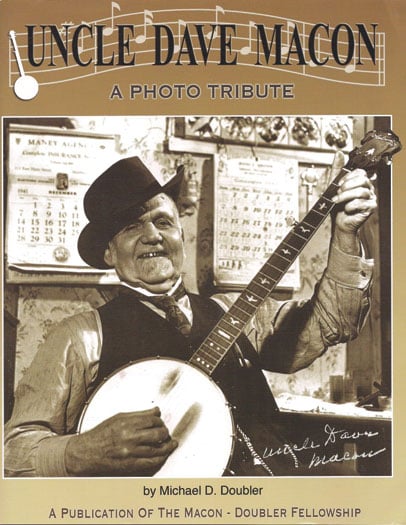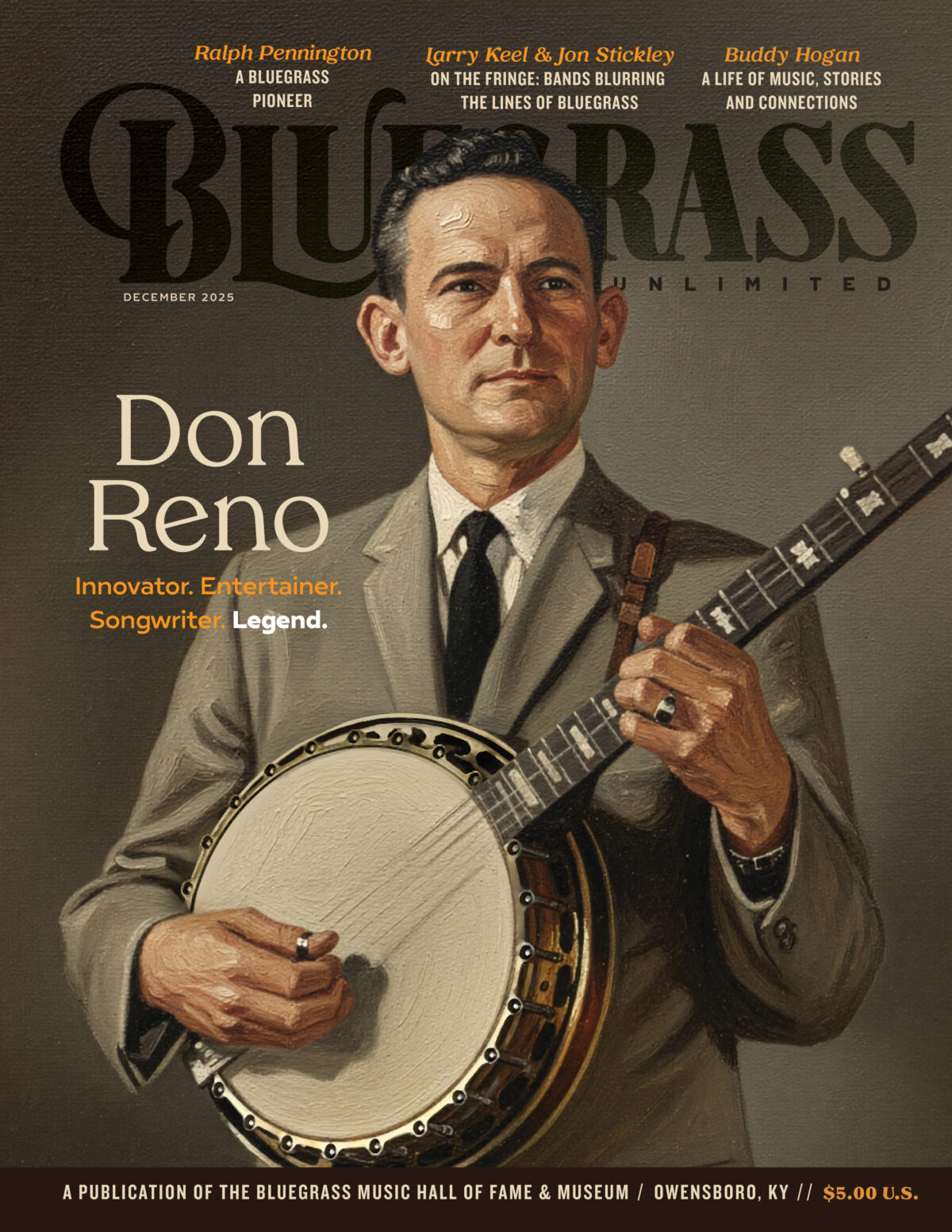UNCLE DAVE MACON: A PHOTO TRIBUTE—BY MICHAEL D. DOUBLER
 UNCLE DAVE MACON: A PHOTO TRIBUTE—BY MICHAEL D. DOUBLER—Macon Doubler Fellowship 9780692210246. Softback, 32 pp., $14. (County Sales, P.O. Box 191, Dept. 3, Floyd, VA 24091, www.countysales.com.)
UNCLE DAVE MACON: A PHOTO TRIBUTE—BY MICHAEL D. DOUBLER—Macon Doubler Fellowship 9780692210246. Softback, 32 pp., $14. (County Sales, P.O. Box 191, Dept. 3, Floyd, VA 24091, www.countysales.com.)
Uncle Dave Macon (1870-1952) is the patron saint of the five-string banjo and the man who brought it from nineteenth century minstrelsy to the core of country music in the early years. In his teens, he performed for tips at a family inn in Readyville, Tenn., and later entertained informally as he drove mule-drawn wagons from home to Nashville for his freight hauling company. After gasoline trucks put him out of business in 1920, he honed his performing skills and turned to professional entertainment, where he earned enough with his inspired music, verbose jokes, and stories to support his large family.
Uncle Dave (aka The Dixie Dewdrop) could shout, kick, stomp, whoop, swing, and twirl his banjo and thrill audiences with his larger-than-life persona. By 1924, he was making records; a year later, he was touring Loew’s vaudeville theater circuit and, in 1926, he made his first appearances on the Grand Ole Opry, where he was regularly featured until his death in 1952. He is still venerated in country and folk music as a 1920s trailblazer whose forceful personality attracted thousands of fans. He made old-time country music popular on early radio and records, setting the standard for banjo music in the 1920s, much as Earl Scruggs did in the 1940s.
Macon’s great grandson Michael Doubler has prepared a magazine-size book that combines familiar photos with others that have appeared rarely or not at all, before now. The images are good, the layout attractive, and everything’s printed on glossy paper stock. There are photos of Uncle Dave from childhood through old age, along with ancestors, family members, childhood and adult homes, gravestones, Opry colleagues, advertisements, and other ephemera. Even Bill Monroe turns up, clearly caught off guard in a 1940s snapshot with Macon and a fan. There are annotations and a good essay that tie them all together and the Macon-Doubler Fellowship deserves congratulations for a valuable publication.RKS
